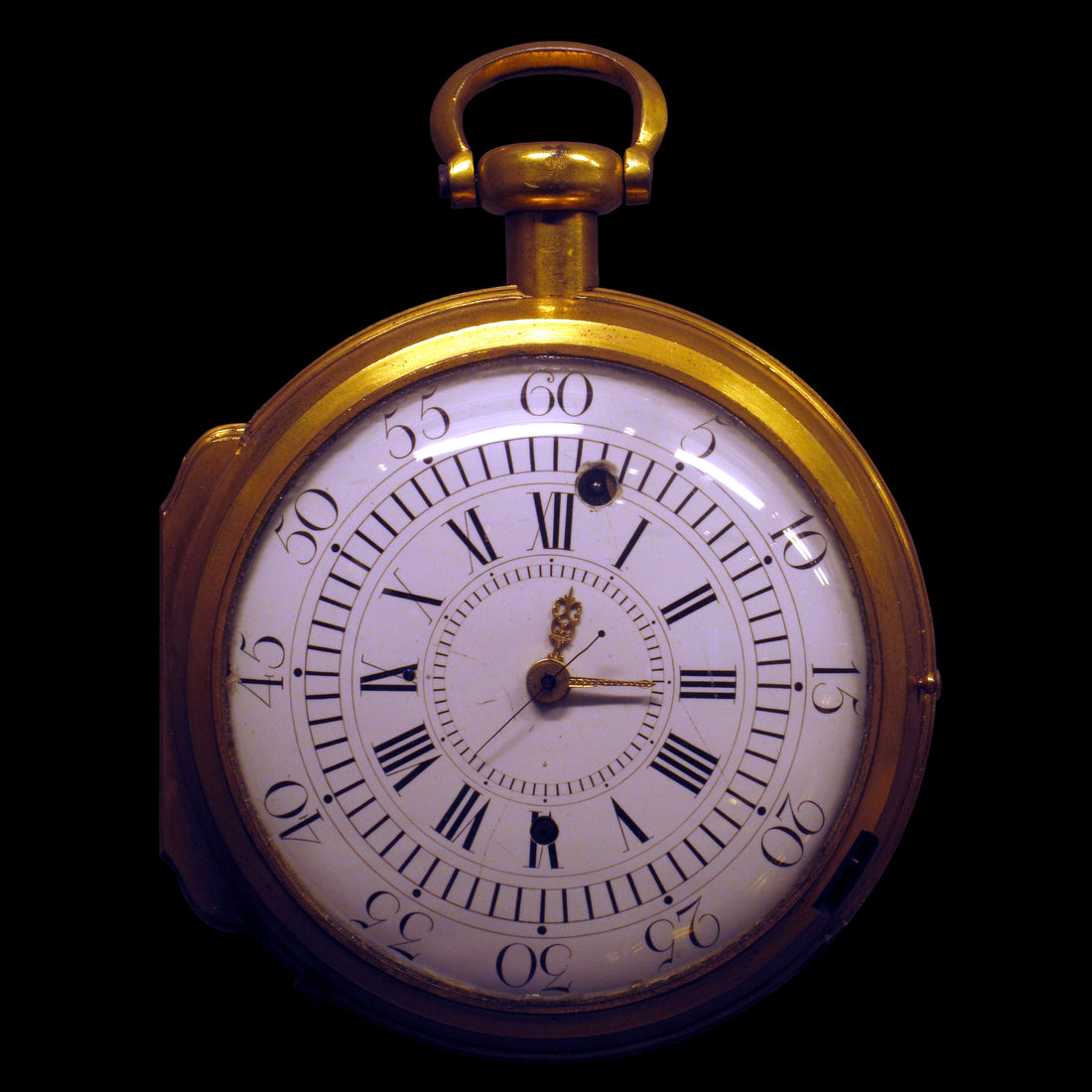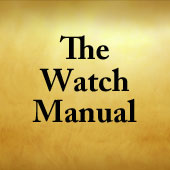
History of chronometers
Here are a few events that traced the history of the invention of the chronometer
1712 - The British Parliament passed the Longitude Act
After the Scilly naval disaster of 1707, a terrible shipwreck involving four British ships which was caused by an error in navigation, the British Parliament offered a huge amount of money, £20,000 (equivalent to over $5 million dollars of today), to whomever found a method for determining longitude at sea. The first nation which would achieve a strategic result, as it would dominate the naval routes, and so, the commerce.
This Act had the effect of intensifying the independent research of watchmakers to solve the issue - and get the lucrative reward. A similar prize would be instituted by the French King as well.
1715 - Development of the deadbeat anchor escapement for pendulums
George Graham developed this kind of escapement, used in pendulum clocks.
The first inventor of the anchor escapement, though, was rumored to be Robert Hooke, but the first working version was made by Joseph Knibb around 1670.
However, the original design suffered from a recoil effect. Richard Towneley redesigned it in 1675, and it seems that George Graham was the first to refine it
further and use it commercially around 1715. The Graham escapement is still used today in pendulum
clocks.

George Graham
1715- Thomas Mudge (1715 - 1794)
Thomas Mudge was another central figure of watchmaking. An apprentice to George Graham, Mudge around 1755 invented the detached lever escapement - which is today known as the Swiss lever - the prototype of the escapement we still use today in watches. In 1765 he published a book, "Thoughts on the Means of Improving Watches, Particularly those for Use at Sea". He moved to Plymouth in 1771, where he developed different models of marine chronometers. He was nominated Clockmaker to George III in 1776, and one of the watches he made for the King is still conserved in the Royal Collection at Windsor Castle.

Thomas Mudge
1717 - Pierre Le Roy (1717-1785)
Le Roy was a notable French clockmaker, very active in the field of chronometers. Born in Paris, he was the eldest son of Julien Le Roy, a clockmaker to Louis XV who had worked with Henry Sully.
He was extremely prolific, having invented the detent escapement, an extremely precise type of detached escapement, the temperature-compensated balance and the isochronous balance spring. However, he always was on the losing side when compared with his business rival, Ferdinand Berthoud - something that eventually led him to an enbittered retirement from active watchmaking. Nevertheless, his developments are considered as the foundation of the modern precision clocks.
1721 - Pierre Jaquet-Droz (1721 - 1790)
Pierre Jaquet-Droz was the founder of the Maison of the same name, one of the oldest of Switzerland, and a notable inventor of mechanical constructs
known as automates, which he used to demonstrate his Maison had mechanical skill. From 1768 to 1774, together with Henri Louis Jaquet-Droz and Jean Frédéric Leschot, he built three of them, the "writer," the "lady musician" and the "draughtsman", which are now conserved at the Museum of Art and History at Neuchâtel (Switzerland). Jaquet-Droz was very active in the creation of singing bird boxes and developed chiming elements and gongs so to adapt them to watchmaking.

1721 - Improvement of the cylinder escapement Graham finalizes the cylinder escapement invented by Tompion
This improvement was so crucial that from 1726 Graham used this escapement in all of his watches instead of the verge.
The French watchmaker Julien Le Roy, the father of Pierre, in 1728 received one watch equipped with this escapement and recognized the superiority of the
system. Invention of the Graham mercury clock Pendulum clocks were very precise timepieces, but watchmakers noted that they slowed down in summer. This observation determined that thermal expansion and contraction of the pendulum rod because of temperature changes was a source of error. So, the issue was solved with the invention of temperature-compensated pendulums. Graham was the first to produce a compensated pendulum through the use of a
mercury counterweight.
1722 - Invention of the grasshopper escapement
John Harrison developed this complex, but very precise escapement during his researches for competing in the Longitude prize. The grasshopper was a low-friction escapement for pendulum clocks, that he originally devised for a turret
clock in the stable block at Brocklesby Park in Lincolnshire. He used this escapement design in his first three marine chronometers, H1 - H3, eventually returning to a modified verge escapement for his H4 chronometer.

The grasshopper escapement
1735 - Founding of Blancpain
Jehan-Jacques Blancpain started making watches in 1735 in Villeret, Switzerland. He was the founder of the Blancpain brand, setting up his first workshop on the upper floor of his house at Villeret, in the area of the Bernese Jura. Blancpain would remain owned by the founding family for two centuries, until the death of Frédéric-Emile Blancpain in 1932, when it was bought by two former aides of Frédéric-Emile, Betty Fiechter and André Léal, and renamed (as it was required by law) Rayville S.A., succ. de Blancpain.
 Jehan-Jacques Blancpain
Jehan-Jacques Blancpain
1738 - Founding of Jaquet Droz
A very young Pierre Jaquet-Droz started to work as a watchmaker under Josué Robert. He was very talented, and developed a knack for one of the
passions of the time: automata. His exceptional skill attracted much attention, so much that Pierre Jaquet-Droz was urged by the governor of Neuchâtel to present his works abroad. In the following years, his workshop became extremly popular, but sadly, after the death of himself and his son, the company
folded in 1791, and was revived only recently.
 Pierre Jaquet-Droz
Pierre Jaquet-Droz
1755 - Founding of Vacheron Constantin
Vacheron Constantin is the oldest watchmaking brand that has been in continuous operation since its founding. It is part of the so-called, "Holy
Trinity" of watchmaking, along with Patek Philippe and Audemars Piguet. The Maison is also known as "The Old King".
It was founded by Jean-Marc Vacheron, a Geneva-based watchmaker, who started to develop some of the features that would become a signature of the company: watch complications. The Vacheron company prospered for three generations, until the grandson of the founder, Jacques-Barthelemy Vacheron, found a business partner in 1819, François Constantin. It assumed its logo, the Maltese Cross, in 1880, inspired by the remontoire, a component used on the barrel.

1761 - Ferdinand Berthoud completes his first marine chronometer
While Harrison was struggling to get himself paid by the British Longitude Board, Berthoud created his first marine chronometer for the French. All the major nations were competing to get the most exact chronometer onboard of their ships: and France, a longtime competitor of England, was more then
interested in Berthoud and Le Roy developments. Eventually, the first marine chronometer from Berthoud was accepted and financed in 1766 by the King
Louis XV.
Want to know more? Buy the Illustrated History of Horology
Featured image:
Ferdinand Berthoud's marine chronometer no.3, 1763, By Rama, CC BY-SA 3.0 fr, https://commons.wikimedia.org/w/index.php?curid=53304696
The Watchonomicon is an independent blog, written and managed by The Watch Manual. The Watch Manual is NOT affiliated in any way with any brand mentioned in articles.
